Abstract Art: A Deep Dive into Its Meaning, Characteristics, and Humberto Poidomani's Unique Contribution
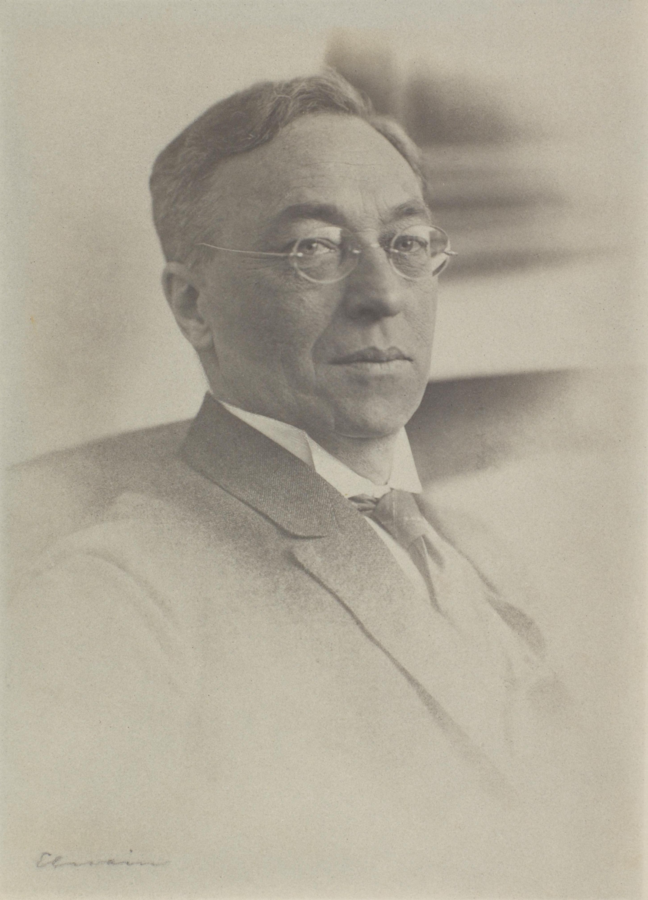
|
| Wassily Kandinsky is one of the most famous figures for abstract painting. A Russian painter and theorist, Kandinsky pioneered abstract art by shifting from traditional forms to focus on emotion and spirituality through colors and shapes. His works, like "Composition VII" and "Yellow-Red-Blue," are known for their bold use of color and abstraction, solidifying his role in modern art. |
Introduction
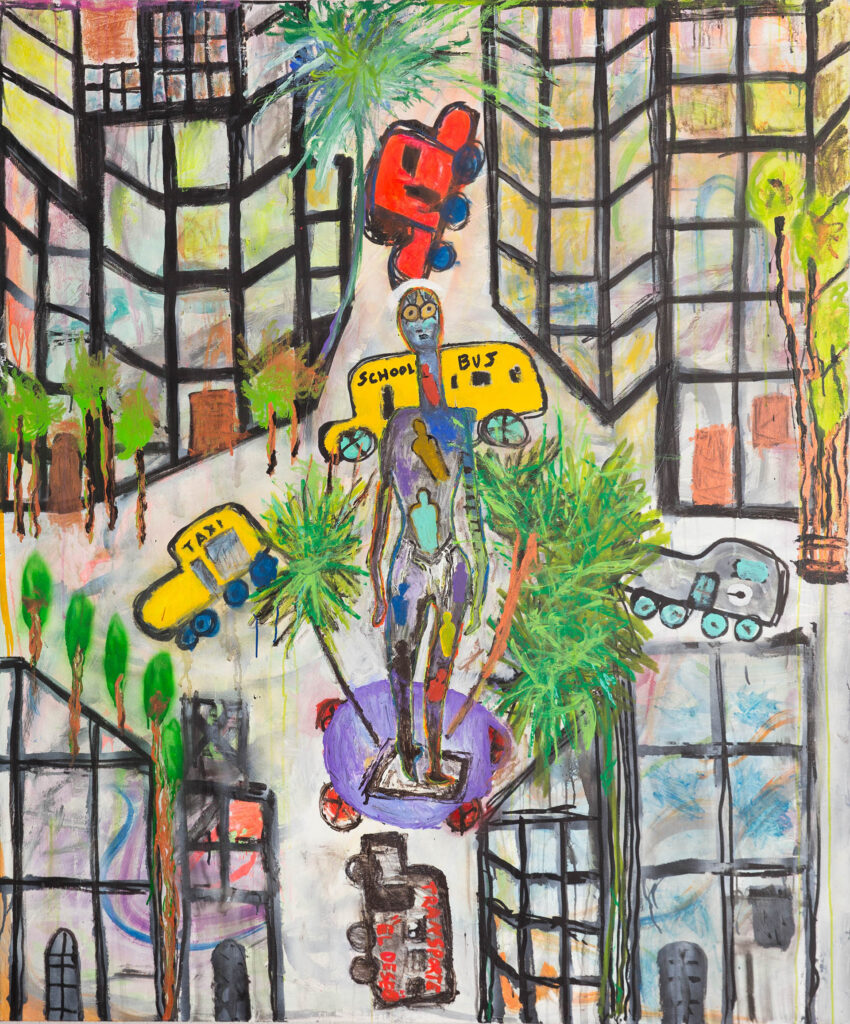
Abstract art is a genre of visual art that aims to break away from traditional representation. It uses shapes, colors, forms, and gestural marks to achieve its effect rather than directly depicting visual reality. This form of art emphasizes the intrinsic qualities of the medium and explores the expressive potential of art itself. The essence of abstract art is not to represent the world but to invoke emotions, provoke thoughts, and reflect on the complexity of human experience.
In this comprehensive exploration of abstract art, we will define its core characteristics, delve into its purpose, and analyze the elements that define it. We will also highlight Humberto Poidomani’s work, a contemporary artist who utilizes abstract art to explore profound ideological themes. Historically, artists like Pablo Picasso significantly contributed to the development of abstract art by breaking away from conventional representation with Cubism, a movement that introduced fragmented perspectives and geometric forms. Similarly, Claude Monet’s Impressionist focus on light and color over detailed representation laid the necessary groundwork for the following abstract explorations. These foundational contributions are just a few examples among many influential artists who shaped the evolution of abstract art. As future blogs explore these prodigious artists and their contributions, readers will gain an even deeper understanding of the breadth and diversity of the abstract art movement and its ongoing evolution today.
What Defines Abstract Art?
Abstract art departs from accurate representation. Unlike traditional art forms that depict physical reality, abstract art uses a visual language that avoids creating recognizable images. Instead, it uses shapes, colors, forms, and textures to convey meaning.
Critical Aspects of Abstract Art
Non-Representational Nature: Abstract art does not represent objects or scenes from the natural world. It avoids literal depiction, focusing instead on the elements of art — line, shape, color, and form.
Emphasis on Medium: Abstract artists often emphasize the physical aspects of their chosen medium, which includes the paint’s texture, the brushstrokes’ movement, and the composition of the elements on the canvas.
Emotional and Conceptual Focus: Abstract art often conveys emotions, ideas, or a sense of movement rather than depicting an object or scene. This approach allows artists to create artworks that feel more spontaneous and expressive.
Exploration of Form and Color: Abstract art focuses on color and form as the primary means of expression. Artists use these elements to create visual experiences that viewers can interpret in various ways.
Freedom of Interpretation: Abstract art allows viewers to engage with the artwork personally, interpreting its meaning based on their emotions and thoughts. This open-ended nature makes abstract art a highly subjective experience.
Does Humberto Poidomanis’ “Humberto Poidomani – Doble mirada – Acrylic on Canvas” reflect a typical Abstract Art painting?
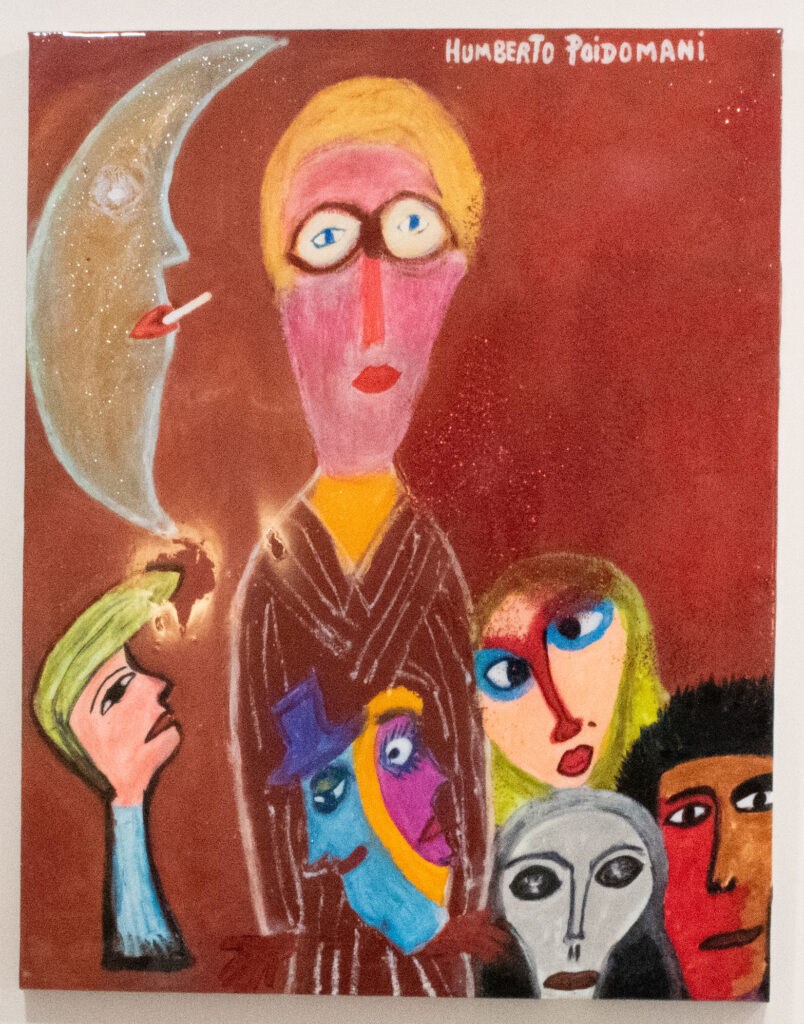
This painting has elements characteristic of abstract art but also incorporates figurative or representational art features. Its use of vibrant, non-naturalistic colors, simplified forms, and exaggerated facial features aligns with abstract art’s emphasis on exploring visual elements like shape, color, and alignment over realistic representation.
However, the painting still depicts recognizable human figures and facial features, suggesting a blend of abstract and figurative styles. This approach allows the artist to express emotion and character more stylized and expressively, a technique often found in modern art movements like Expressionism or Naïve Art.
While this painting incorporates abstract qualities, it is not purely abstract art since it retains identifiable elements from the real world. Instead, it represents a hybrid style that merges abstraction with representational forms.
The 5 Main Characteristics of Abstract Art
To understand abstract art more deeply, we should explore its main characteristics. These characteristics help differentiate abstract art from other genres and provide a framework for interpreting its meaning and significance.
Non-Objective or Non-Representational: Abstract art does not depict specific objects, people, or scenes. Instead, it uses visual elements to create compositions open to interpretation. This approach allows artists to explore themes and emotions beyond the tangible world.
Freedom of Expression: Abstract art often showcases freedom of expression. Artists feel free of the need to depict the physical world accurately, which allows them to experiment innovatively with form, color, and technique.
Emphasis on Visual Elements: Abstract art strongly emphasizes the visual elements of composition, including line, color, shape, and texture. These elements create visual experiences that evoke emotions and provoke thought.
Gestural Marks and Spontaneity: Many abstract artists create their work using gestural marks and spontaneous techniques. These methods can result in dynamic and expressive artworks that capture a sense of movement and energy.
Focus on the Viewer’s Perception: Abstract art often engages the viewer in a dialogue with the artwork. Because it does not depict recognizable subjects, viewers must rely on their perceptions and interpretations to make sense of the work.
Let us look at some mixed media artwork by Humberto Poidomani titled “Sin Esperanza,” which is acrylic on canvas with resin coating.
Please note that this Art Painting is not to be confused with the renowned Mexican painter Frida Kahlo, in which a painting portrays Kahlo’s physical and emotional suffering, capturing her reality through a vivid and imaginative scene. “Without Hope, 1945 by Frida Kahlo”
https://en.wikipedia.org/wiki/Frida_Kahlo
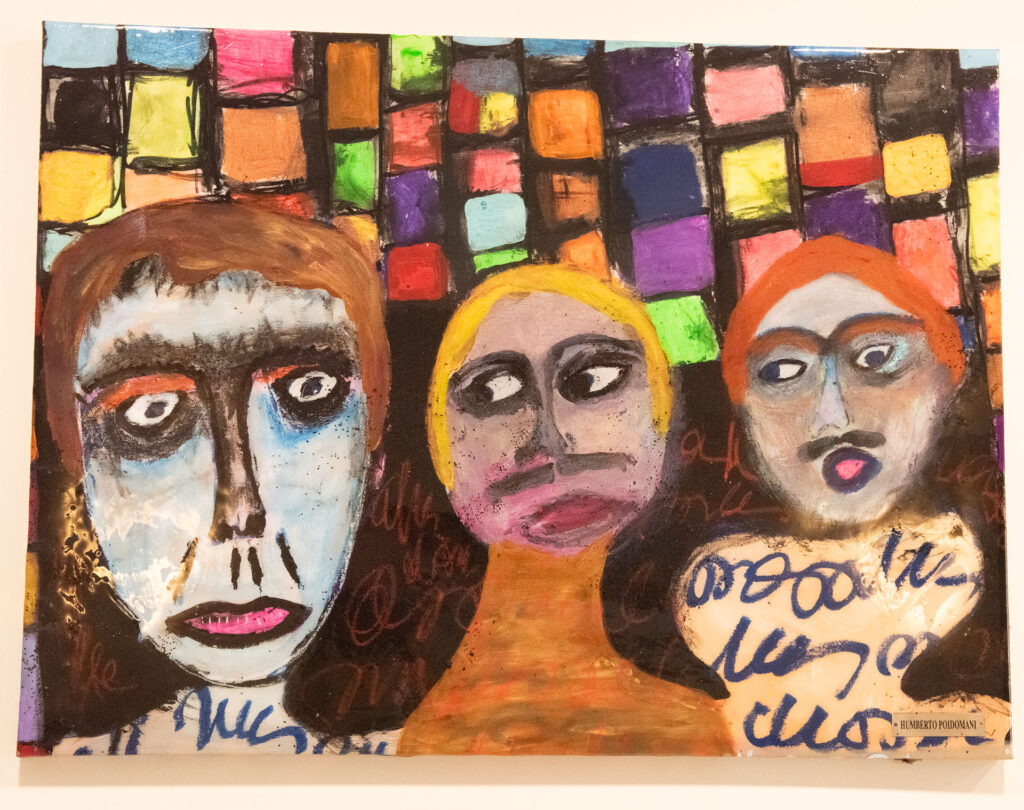
"Sin Esperanza" by Humberto Poidomani - Acrylic on canvas with resin coating.
“Sin Esperanza” blends elements of abstraction with representational art. While the figures and faces are recognizable, the painting also incorporates abstract qualities, such as bold, non-naturalistic colors, exaggerated facial features, and a highly stylized background of colorful, uneven squares and scribbles.
The painting could be considered a form of expressionism or a naive style rather than pure abstract art. Expressionist art often focuses on representing the artist’s emotional experience rather than realistically depicting reality. The distorted figures and emotive colors in this painting convey strong emotions and psychological depth, aligning with expressionism principles.
While this painting includes abstract elements, it is not strictly abstract art. It uses abstract techniques and figurative representation to express emotions and ideas, making it a hybrid work rather than a purely abstract piece.
Let us move on to Poidomani’s Funghi V, which depicts a colorful and stylized cluster of mushrooms. Like the previous works, this painting is still not considered abstract art because it clearly represents identifiable subjects—in this case, mushrooms of various shapes, sizes, and colors.
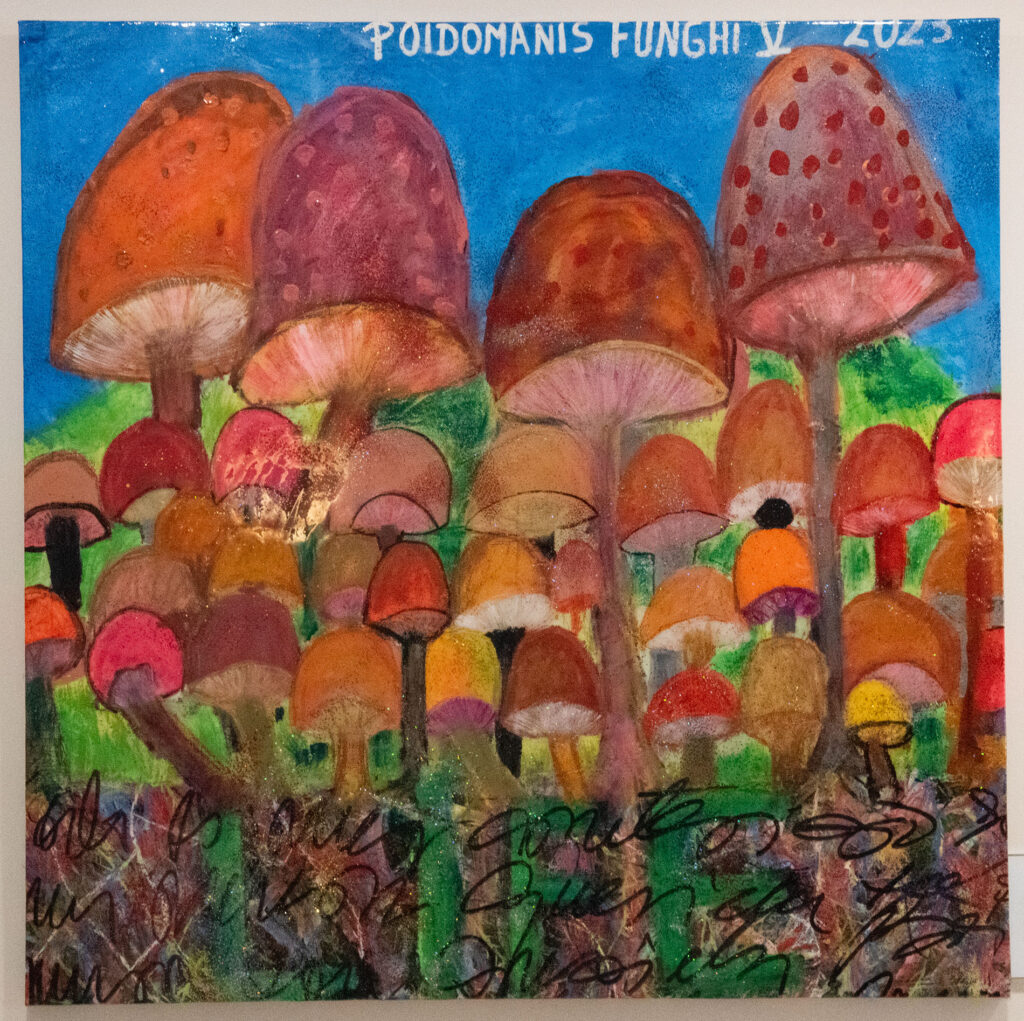
"Funghis V" by Humberto Poidomani - Acrylic on canvas with resin coating.
This painting’s style can be described as naive or expressionist. It uses bold, vibrant colors and simplified, almost childlike forms. The artist employs a playful and imaginative approach, using exaggerated shapes and bright colors to create a whimsical and visually striking composition. The scribbles at the bottom of the painting add a layer of spontaneity and texture, contributing to its expressive quality.
While the painting incorporates artistic freedom and expression elements, it remains representational as it depicts recognizable forms. Therefore, it would not be classified as abstract art, which typically avoids direct representation of objects and focuses instead on using shapes, colors, and forms to convey meaning without depicting the visible world.
The Purpose of Abstraction in Art
The purpose of abstraction in art is multifaceted. It liberates artists from the constraints of representational art, allowing them to explore new ways of expression. Here are some of the critical purposes of abstraction in art:
- Exploration of Inner Emotions and Ideas: Abstraction allows artists to explore their inner emotions, thoughts, and ideas without adhering to the physical world. With this freedom, artists can use abstraction as a powerful tool to express complex or abstract concepts that traditional means cannot easily depict.
- Please focus on the Medium: Abstract art often emphasizes the material qualities of the medium itself, including the texture of the paint, the interplay of colors, and the physicality of the brushstrokes. By highlighting these elements, abstract art encourages viewers to appreciate the intrinsic beauty of the materials used.
- Breaking Traditional Boundaries: Abstract art challenges traditional notions of what art can be. By rejecting representationalism, abstract art opens up new possibilities for creative expression and encourages artists to push the boundaries of their craft.
- Engaging the Viewer: Abstract art invites viewers to interact personally with the artwork. Because it does not depict recognizable subjects, viewers must rely on their emotions and experiences to interpret the work. This open-ended nature creates a unique, subjective experience that can vary widely from person to person.
- Reflecting on Modern Life: Abstract art can reflect on the complexities of modern life. By focusing on form, color, and texture, abstract artists can convey the chaos, confusion, and beauty of the contemporary world in a way that traditional art forms cannot.
Mixed Media Art
Moving on to the following example, which is closer to Abstract Art, more is needed to achieve the ideal representation.
Let’s analyze this yet-to-be-named piece by Humberto Poidoman. For our illustration purposes, we will call it “Painting 27.”
Painting 27 is an abstract mixed-media artwork by Humberto Poidomani. It features a dynamic composition of bold colors, textured patterns, and a mix of abstract and representational elements. The artwork prominently includes a pair of denim jeans and a paintbrush integrated into a colorful, layered environment. The use of various textures and abstract forms, along with the phrase “ALL THE WAY UP” adds depth and intrigue to the piece, inviting viewers to explore its complex visual narrative.
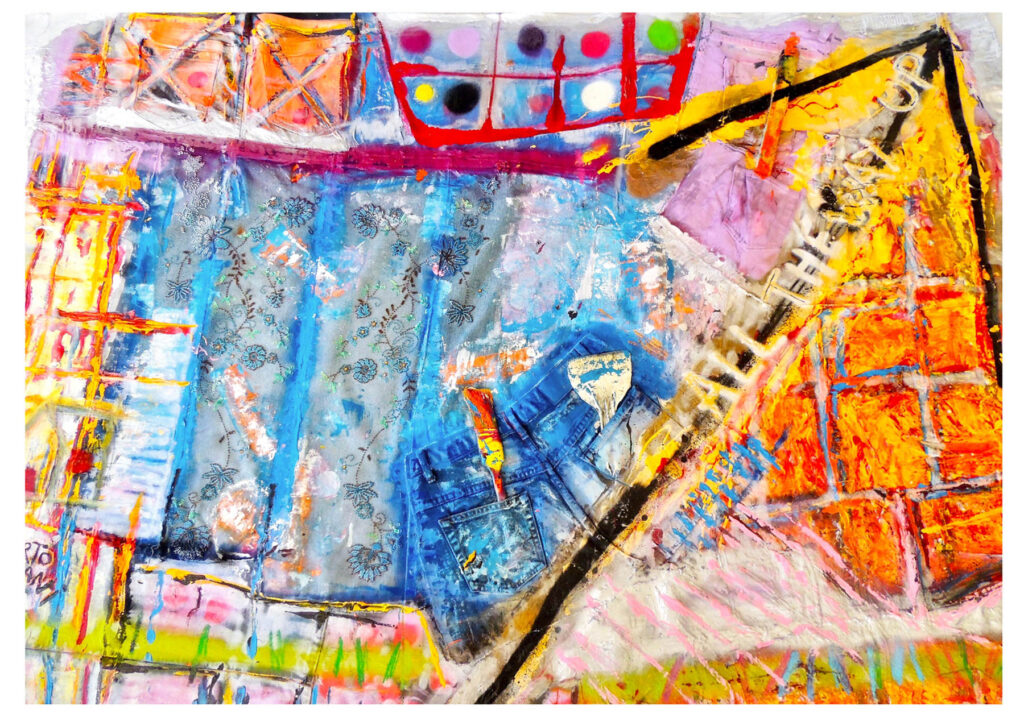
While the jeans and paintbrush are identifiable objects, their integration into the abstract environment and their focus on non-representational forms and textures align this work more closely with abstract art. This piece explores visual elements and materials in a way that emphasizes artistic expression and experimentation over clear representation.
Overall, this artwork can be considered abstract or mixed-media art, as it uses abstraction techniques and incorporates identifiable objects in a loose, expressive manner. The use of layered textures and a collage-like approach suggests a focus on the materiality and physical qualities of the medium, which are common in abstract art.
The 7 Elements of Abstract Art
The number’s straightforward and easily recognizable style of the number 7 contrasts sharply with the typical abstract art representation, emphasizing clarity and direct visual appeal.

Like all art forms, Abstract art is composed of several fundamental elements. These elements serve as the building blocks of the artwork and play a crucial role in shaping its overall effect. Here are the seven critical elements of abstract art:
- Line: In abstract art, lines can create movement, direction, and emphasis. They can be thick or thin, straight or curved, continuous or broken. Lines can guide the viewer’s eye through the artwork and contribute to its overall composition.
- Shape: Abstract art often features geometric or organic shapes. Geometric shapes, such as squares, circles, and triangles, are precise and regular. Organic shapes are more free-form and irregular, often resembling natural forms. Shapes can create patterns, contrasts, and balance within the artwork.
- Color: Color is one of the most potent elements of abstract art. It can evoke emotions, create depth, and establish a mood. Abstract artists often use color to explore the emotional impact of their work, experimenting with different combinations and intensities to achieve their desired effect.
- Texture: Texture refers to the surface quality of the artwork. It can be smooth, rough, glossy, or matte. In abstract art, texture can add depth and interest, enhancing the medium’s tactile qualities. Artists can create texture through various techniques, such as layering paint, using different brushstrokes, or incorporating mixed media.
- Form: Form refers to an object’s three-dimensional quality. In abstract art, artists can suggest form through light, shadow, perspective, and scale. By manipulating form, they create a sense of depth and space within the artwork, contributing to its overall composition.
- Space: Space refers to the area within and around the elements of the artwork. It can be positive (the area occupied by objects) or negative (the empty spaces around objects). In abstract art, space can create balance, contrast, and movement, guiding the viewer’s eye through the composition.
- Value: Value refers to the lightness or darkness of a color. In abstract art, value can create contrast, depth, and emphasis. By varying the values within a composition, artists can create a sense of movement and energy, drawing the viewer’s attention to specific areas of the artwork.
Humberto Poidomani: A Modern Abstract Artist
Humberto Poidomani, an Argentine-born artist, has developed a notable career in abstract art over the past two decades. His work explores ideological themes such as social crisis, ecology, life and death, and poverty. Poidomani’s art features complex compositions, vibrant colors, and diverse media, including painting, sculpture, and assemblages.
Poidomani's Approach to Abstract Art
Poidomani’s work is deeply rooted in the principles of abstract art. He uses non-representational forms to convey powerful messages about the human condition and contemporary society. His bold colors and gestural marks create a dynamic visual experience that engages viewers emotionally.
- Use of Mixed Media: Poidomani often incorporates found objects and industrial materials into his works, blurring the line between painting, sculpture, and installation. This approach reflects the “arte povera” style, which emphasizes using humble, everyday materials to create art that challenges traditional notions of value and beauty.
- Exploration of Ideological Themes: Poidomani’s art is not just about aesthetic expression but also about social and political issues. Through his abstract compositions, he explores themes such as poverty, environmental degradation, and the fragility of life. His work often includes written phrases and quotes from classical philosophers, adding intellectual depth to his visual explorations.
- Naïve Style: Despite his complex themes, people often describe Poidomani’s style as “naïve,” characterized by childlike simplicity and bright, vivid colors. This contrast between the simplicity of his style and the depth of his themes creates a unique tension that makes his work both accessible and thought-provoking.
Analyzing Poidomani’s Art Through the Elements of Abstract Art
- Line and Shape: Poidomani’s use of line and shape is bold and expressive. His lines often appear spontaneous and gestural, adding a sense of dynamism and movement to his pieces. He employs geometric and organic shapes, combining structured forms with fluid, irregular lines to create a visual contrast that draws the viewer’s attention. This interplay between lines and shapes adds depth and complexity to his work. It reflects the tension and conflict inherent in the themes he explores, such as social crisis and ecological degradation.
- Color: Color plays a significant role in Poidomani’s abstract art. He uses bright, vivid colors to create striking visual effects and convey strong emotions. His color palette often includes bold contrasts—such as reds against greens or blues against oranges—that heighten the emotional intensity of his work. Using color this way, Poidomani captures the viewer’s eye and evokes a visceral response, inviting them to engage with the artwork on a deeper emotional level. His choice of colors can also reflect the themes he is exploring, with darker, muted tones suggesting despair or grief and brighter hues representing hope or resistance.
- Texture: In Poidomani’s artworks, texture is created by layering different materials and applying various painting techniques. He often uses thick, gestural brushstrokes to build up layers of paint, creating a tactile surface that invites viewers to explore the physical qualities of the artwork. His incorporation of found objects and industrial materials adds a unique textural dimension to his pieces, further blurring the boundaries between painting and sculpture. This emphasis on texture helps to convey the raw, unfiltered nature of the themes he addresses, making his work feel more immediate and visceral.
- Form: Poidomani’s use of form is dynamic and varied. He often combines flat, two-dimensional elements with three-dimensional objects, creating a sense of depth and perspective within his compositions. This juxtaposition of flat and sculptural forms adds a sense of movement and fluidity to his work, encouraging viewers to explore the artwork from multiple angles. By playing with form in this way, Poidomani challenges traditional notions of representation and invites viewers to reconsider their perceptions of space and reality.
- Space: Space is a crucial element in Poidomani’s abstract art. He often creates a sense of depth and movement by strategically using negative space, allowing certain areas of the canvas to remain empty. In contrast, others are densely packed with color and texture. This negative space not only helps to balance the composition but also creates a sense of tension and contrast, reflecting the conflicting emotions and themes in his work. By manipulating space this way, Poidomani encourages viewers to move through the artwork, exploring its different layers and dimensions.
- Value: Poidomani’s use of value—lightness and darkness of color—is essential to his abstract compositions. He often employs a wide range of values to create contrast and emphasize some aspects of the artwork. For example, by using darker values to create shadows and lighter values to highlight specific areas, Poidomani can guide the viewer’s eye through the composition, drawing attention to particular details or themes. This careful manipulation of value adds depth and complexity to his work, enhancing its overall impact and making it more visually engaging.
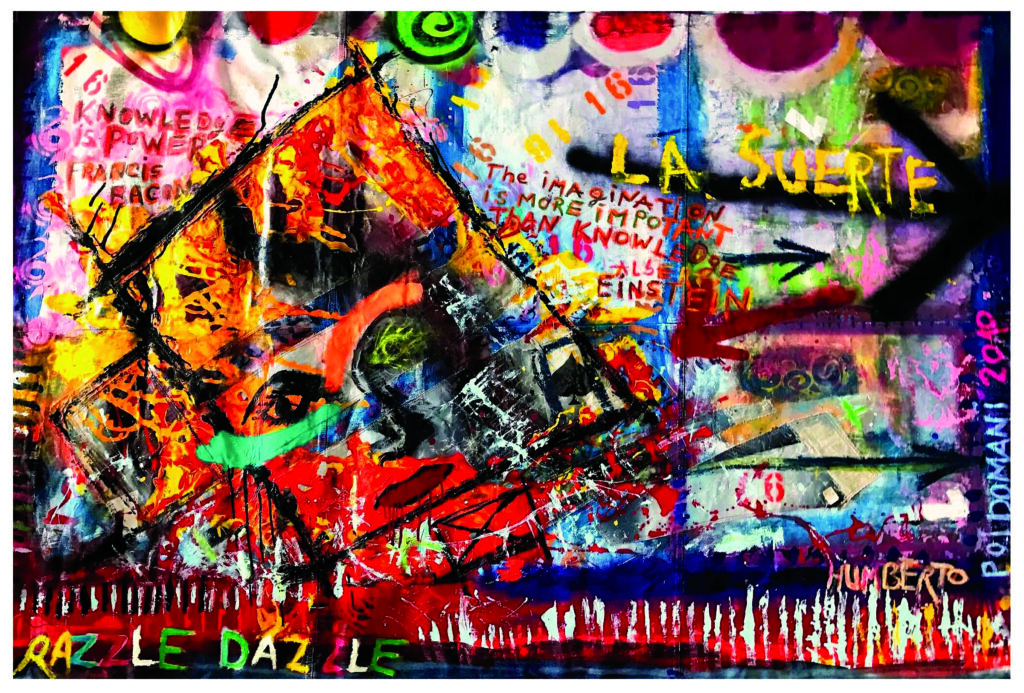
This 2010 painting features vibrant colors, dynamic brushstrokes, and text elements that create a visually energetic and expressive composition.
While the artwork contains recognizable words and phrases, such as “RAZZLE DAZZLE,” “Knowledge is Power,” and “The Imagination is More Important Than Knowledge,” these elements are integrated into an overall abstract composition. The painting focuses not on depicting realistic or representational forms but on exploring visual elements like color, texture, and form.
The use of overlapping colors, erratic lines, and mixed media gives the painting a sense of movement and spontaneity, key characteristics of abstract art. The text adds a conceptual layer to the piece but does not dominate the composition or make it representational. Instead, the text functions as part of the visual language of the painting, contributing to its abstract nature.
Overall, this painting is a good example of abstract art, blending non-representational forms and text to create a visually dynamic and thought-provoking work.
Humberto Poidomani and the Purpose of Abstraction in Art
Humberto Poidomani’s approach to abstract art is deeply rooted in the purpose of abstraction: to explore complex ideas and emotions that representational art cannot easily capture.
By moving away from literal depictions, Poidomani is free to delve into themes like social inequality, environmental degradation, and the human condition in a more nuanced and thought-provoking way.
- Exploring Social and Political Themes: Poidomani uses abstraction to comment on social and political issues, such as poverty, war, and environmental destruction. By abstracting these themes, he forces viewers to engage with the underlying concepts and emotions rather than being distracted by the literal subject matter. This approach encourages a deeper understanding of the issues, prompting viewers to reflect on their experiences and beliefs.
- Expressing Personal and Collective Emotions: Abstraction allows Poidomani to convey emotions, from anger and frustration to hope and resilience. Through his use of color, texture, and form, he can evoke a visceral response from viewers, making his work feel personal and universal. This ability to express complex emotions abstractly is a hallmark of Poidomani’s art, allowing him to connect with viewers on a deeper, more emotional level.
- Challenging Perceptions and Encouraging Dialogue: Poidomani uses abstraction to challenge traditional notions of art and representation, encouraging viewers to reflect critically on the world around them.
- His work often raises more questions than answers, prompting viewers to engage in a dialogue about the themes and concepts he explores. This open-ended nature of abstract art makes it a powerful tool for fostering discussion and encouraging diverse interpretations.
The Legacy of Abstract Art and Its Contemporary Relevance
Abstract art has come a long way since its inception in the early 20th century. It has evolved from a radical departure from representational art to a widely recognized and celebrated form of artistic expression. Today, abstract art continues to push the boundaries of creativity, challenging artists and viewers alike to think beyond traditional notions of art and representation.
- Influence on Modern and Contemporary Art: Abstract art has profoundly influenced modern and contemporary art movements, ranging from Abstract Expressionism to Minimalism.
- Artists like Jackson Pollock, Mark Rothko, and Willem de Kooning have all drawn inspiration from abstraction principles, using them to explore new ways of expressing emotion, form, and color.
- Relevance in Today’s World: Abstract art remains as relevant as ever in today’s fast-paced, technology-driven world. It offers a unique way of exploring complex ideas and emotions, providing a space for reflection and introspection. As artists push the boundaries of abstraction, they find new ways to engage with contemporary issues and connect with viewers on a deeper level.
- Poidomani’s Contribution to Abstract Art: Humberto Poidomani is a testament to the enduring power of abstract art. His work exemplifies abstraction’s ability to convey complex ideas and emotions, engaging viewers in a dialogue about the world around them. Using abstract art as a social and political commentary tool, Poidomani continues the legacy of abstract artists before him while also forging his path in the contemporary art world.
Conclusion
Abstract art is a dynamic and versatile form of artistic expression that challenges traditional notions of representation and encourages viewers to engage with art on a deeper, more emotional level. Abstract art allows artists to explore complex ideas and emotions personally and universally by emphasizing form, color, and texture.
Humberto Poidomani’s work exemplifies the power of abstract art to convey profound ideological themes and provoke thought and dialogue. By using abstraction to explore issues like social crisis, ecology, and the human condition, Poidomani invites viewers to look beyond the surface and engage with the deeper meaning of his work.
As abstract art continues to evolve and adapt to the changing landscape of the contemporary art world, it remains a vital and relevant form of expression. Whether through the work of established artists like Poidomani or emerging voices in the field, abstract art pushes the boundaries of creativity. It challenges viewers to think differently about the world around them.
Cited artists—Pablo Picasso, Claude Monet, Vincent van Gogh, and Henri Matisse—have permanent exhibitions:
Pablo Picasso
- Museo Picasso – Málaga, Spain
- Musée Picasso – Paris, France
- Museum of Modern Art (MoMA) – New York City, USA
- Tate Modern – London, UK
- The Metropolitan Museum of Art – New York City, USA
Claude Monet
- Musée Marmottan Monet – Paris, France
- Musée de l’Orangerie – Paris, France
- Musée d’Orsay – Paris, France
- The Metropolitan Museum of Art – New York City, USA
- The National Gallery – London, UK
Vincent van Gogh
- Van Gogh Museum – Amsterdam, Netherlands
- Musée d’Orsay – Paris, France
- The Metropolitan Museum of Art – New York City, USA
- The Museum of Modern Art (MoMA) – New York City, USA
- The Courtauld Gallery – London, UK
Henri Matisse
- Musée Matisse – Nice, France
- Centre Pompidou – Paris, France
- The Museum of Modern Art (MoMA) – New York City, USA
- Tate Modern – London, UK
- The Barnes Foundation – Philadelphia, USA
Cited artists—Humberto Poidomani will undoubtedly have a place in history as a contemporary visionary artist.
